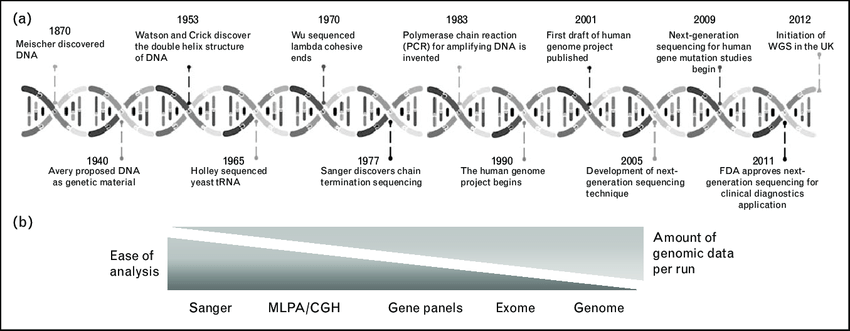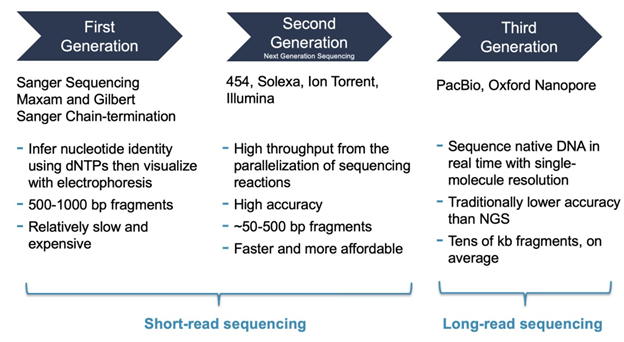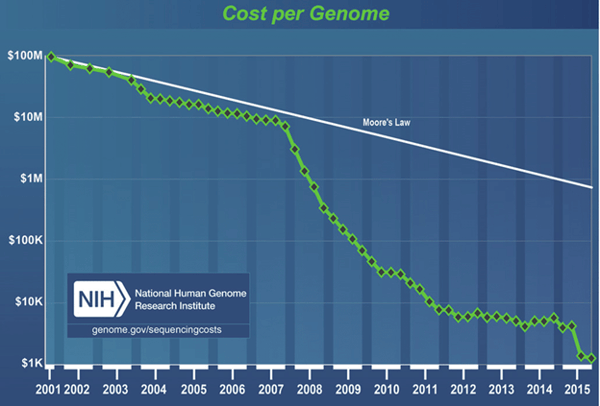The Future of DNA Sequencing & How it impacts the Job Market!
MOLECULAR DIAGNOSTICS, MOLECULAR DIAGNOSTICS RECUITERS, GENETICS RECRUITER, MEDICAL RECRUITER, COMPANION DIAGNOSTICS RECRUITER, MEDICAL DIAGNOSTICS RECRUITERS, MEDTECH RECRUITINGHuman beings have seemingly reached the zenith of genetic advancements. The insights and controls that we have over our DNA are beyond amazing.
Events like the cloning of sheep Dolly and the sequencing of the Human Genome paved the path for the astonishing advancements in the field of genetics that we see today.
And in the next 15 to 20 years, our world will change dramatically from the food we eat to the flies buzzing around us; everything will undergo a genetic remodeling.
This genomic revolution highlights the fact that DNA sequencing technologies are going to shape the job market in the near future significantly.
Introduction
DNA sequencing technology has become the superpower for the health care system as it has opened a new horizon of therapeutic options, such as gene editing of inherited diseases and cancer treatment.
In 2019, around 2.6 million genomes were sequences, and predictive data suggest that by 2024 this number will increase up to 105 million. This rapid increase in the use of DNA sequencing technology is going to shape the future job market greatly.
Data related to the DNA sequencing industry will probably follow the predictive model, Wright's Law, which proposes increasing technology use decreases production costs.
This means the more, the merrier!
When DNA sequencing technology becomes widespread, the production cost for such services will decrease, and subsequently, it will become more readily available to people and various industries.
Historical Overview
The idea that we can break the hidden genetic code gained traction shortly after Watson and Crick solved the 3-D structure of the DNA in 1953. Since then, DNA sequencing technology has witnessed immense changes, from short oligonucleotides (1977) sequencing to trillions of bases (2005), from trying to deduce the sequence of a single gene to the availability of robust and diverse whole-genome sequences.
The timeline of the significant event that occurred in the field of genomics that revolutionized DNA sequencing and their ease of analysis vs. the amount of data obtained per run are given in Image 1.
The era of genomics, also characterized as the 1st Generation Sequencing, started in 1977 with the development of the Sanger Sequencing method by Frederick Sanger, which was automated by Caltech and commercialized by Applied Biosystems in the 1980s.
The 2nd Generation of sequencing was marked by the next-generation sequencing (NGS) development by UK-based company Illumina, which crossed a significant milestone in DNA sequencing. They introduced 'bridge amplification,' which allowed the formation of dense clusters of amplified fragments on a silicon chip.
In 3rd Generation Sequencing, Oxford Nanopore Technologies (ONT) and PacBio Systems revolutionized the sequencing process by merging Real-Time and Nanopore technology for obtaining long genomic reads. They developed a cutting-edge approach called the single-molecule real-time (SMRT) sequencing method.
The DNA sequence evolution and its silent features are shown in Image 2.
DNA sequence technology became more efficient, reliable, and affordable with time.
Advances
Advancements in DNA sequencing have enabled us to exploit the encoded genetic knowledge to our benefit. Today, scientists have developed mutational profiles for various diseases, including hereditary diseases, autoimmune disorders, inflammatory illnesses, and various cancers.
The field of cancer genomics has most profoundly benefited from the applications of next-generation sequencing technology. NGS has dramatically accelerated the discovery and identification of novel oncogenes and has reduced the cost of cancer genomic data availability.
Future
The applicability of DNA sequencing technology such as NGS has allowed us to swiftly obtain and analyze data from the genomes, exomes, and transcriptomes (which are other parts of the genome). This has allowed us to understand the complexity of the cancer genome and explore the diagnostic and therapeutic potential related to it.
We can not only identify cancerous genes in a genome but using the transcriptome data we can also predict the effectivity of chemotherapy.
Technologies Leading the Genomic Revolution
DNA Sequencing
Tumor molecular profiling is an emerging field, and in 2018, the global NGS clinical oncology market was estimated to be worth around 627 million.
Various platforms have commercialized DNA sequencing using next-generation sequencers from Illumina, Life Technologies SOLiD, Caris Life Sciences, Ion Torrent, Pacific Biosciences, and Roche.
NGS technology provides two types of sequencing for creating tumor profiles. One is targeted sequencing, which screens the genome against a panel of recognized or recognized cancer-associated genes.
Another is whole-genome/exome sequencing (WES/WGS), which is vital for making clinical decisions and for discovering novel oncogenic genomic alterations.
The genome-based pharmacology for cancer has contributed tremendously to increasing the idea of precision oncology. Currently, the accuracy of cancer diagnosis has increased, whereas the cost of genetic testing for cancer, especially panel-based NGS, has dramatically reduced.
Image 3 shows the decline in the cost of genome sequencing. 
Artificial Intelligence
Artificial intelligence has revolutionized the field of diagnostic and therapeutic medicine, especially in the field of cancer. AI integrated into computational biology has allowed better prognosis, diagnosis, and treatment options.
With the help of AI and machine learning, we can digitize conventional pathological methods. This will allow us to improve clinical workflow efficiency to provide better healthcare services.
In cancer care, AI can provide calculated information that can help to prioritize patients based on the severity of their disease and can help determine the best-qualified physician for a patient and the safest and most effective treatment for every individual.
AI tools can analyze more extensive medical data in less time, which makes them the best companion to the physician and the healthcare system.
Gene Therapy
Gene therapy is a gene-editing method that allows the removal or addition of genes in the genome. Genetic manipulation involving nanoparticle-based delivery systems allows us to target and destroy cancer cells.
CRISPR is the most cutting-edge DNA editing technique (clustered regularly interspaced short palindromic repeats). CRISPR/Cas9 systems have effectively treated different types of metastatic cancers.
Taconic Biosciences, BlueBird Bio, CRISPR Therapeutics, and Editas Medicine are the leading companies with the latest CRISPR/Cas9 gene-editing technology.
Jobs of Future
The genomic era is here to stay.
The cases of cancer and the advancements in cancer genomics are both increasing. This trend will increase cancer-related spending, which may fuel the market's growth in the coming years.
Health and government organizations encourage individuals to undergo a standard diagnostic process to minimize cancer-related healthcare expenses.
This whole scenario will increase the job market demand in oncology testing and treatment fields. This will open new career opportunities for people with different types of qualifications, ranging from sales representatives that have relationships with oncologists, molecular lab technologists with expertise in cancer biology; data scientists specialized in cancer genomics, NGS assay developers, and AI software developers for the integration of machine learning in the field of healthcare and cancer diagnostics.
Recently many of our clients who own cancer diagnostic companies have shown interest in hiring candidates that can assist with developing AI technology for their company. They aim to utilize AI and machine learning (ML) to provide better treatment to cancer patients.
About Us
Connexis Search Group is a life science and biotechnology recruiting firm with offices throughout the United States. Many of our clients are focused on cancer diagnostics and treatments.

.jpg)


No Comments